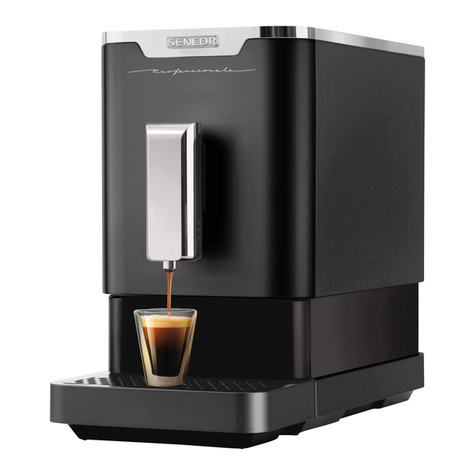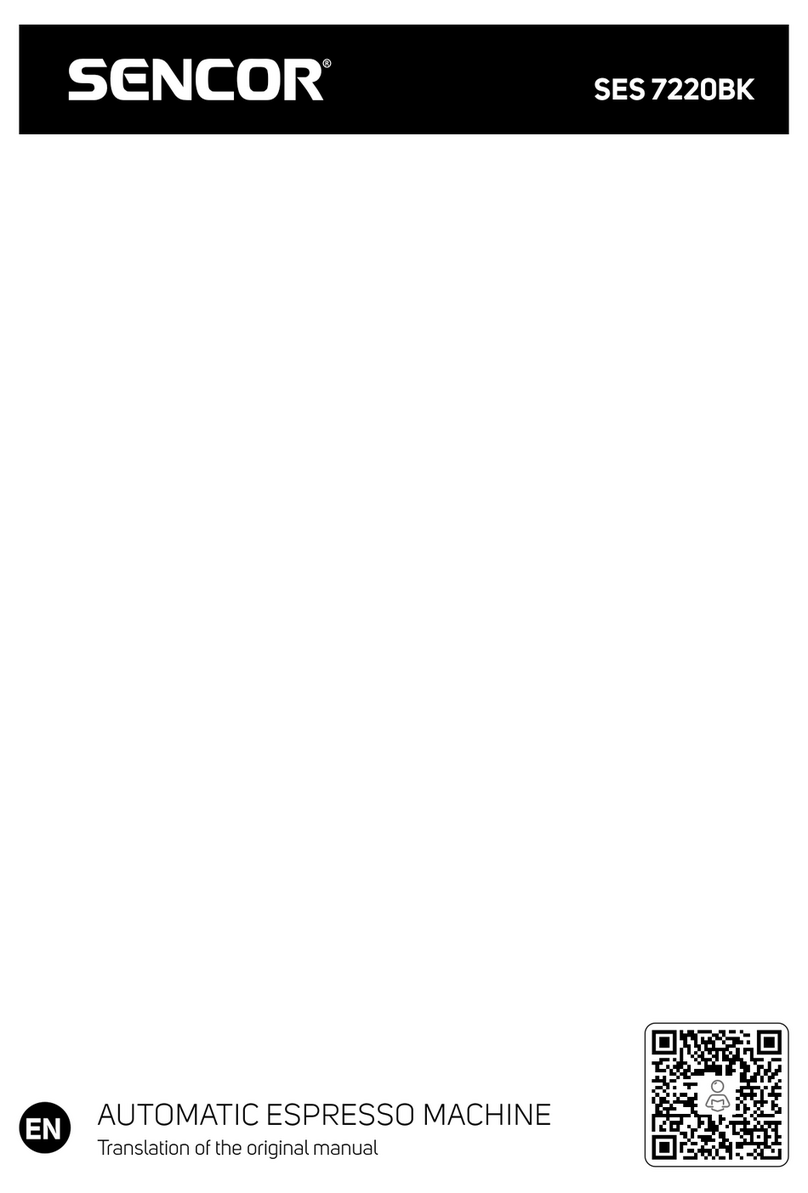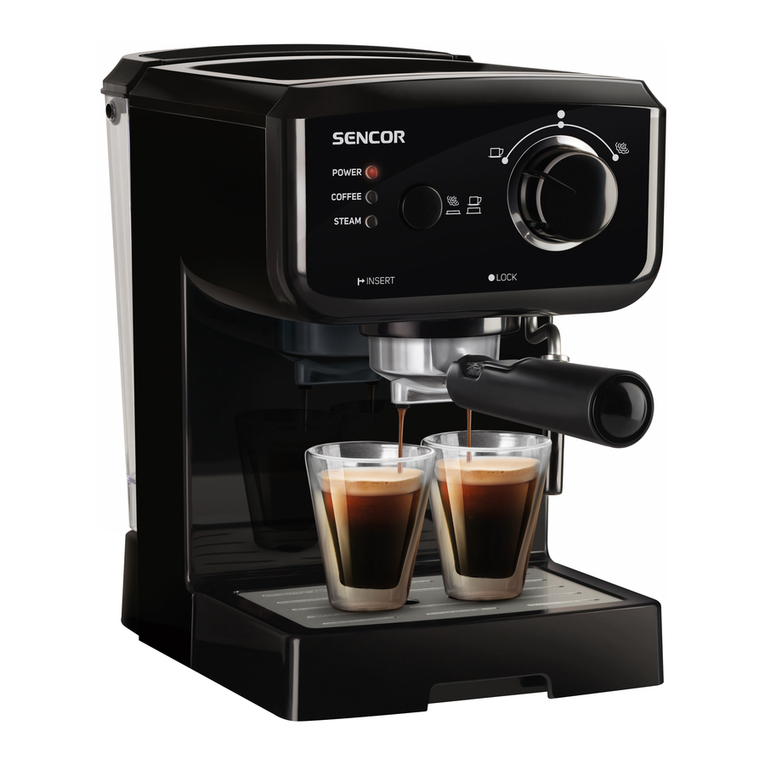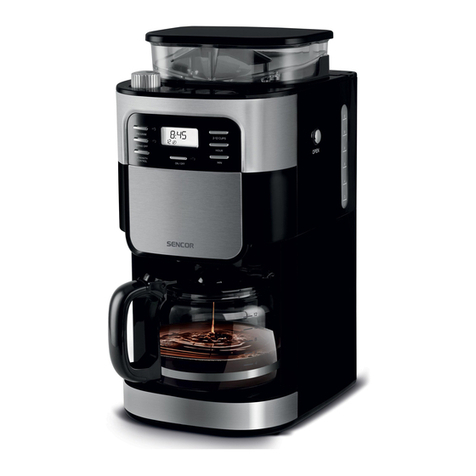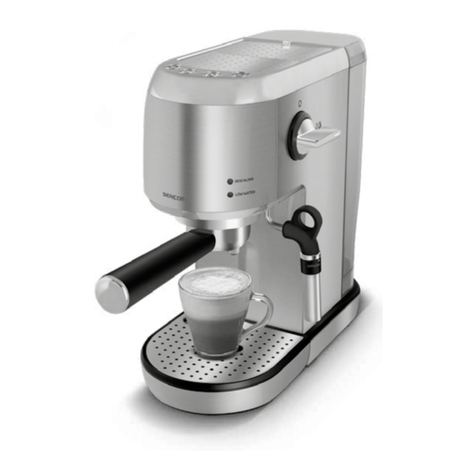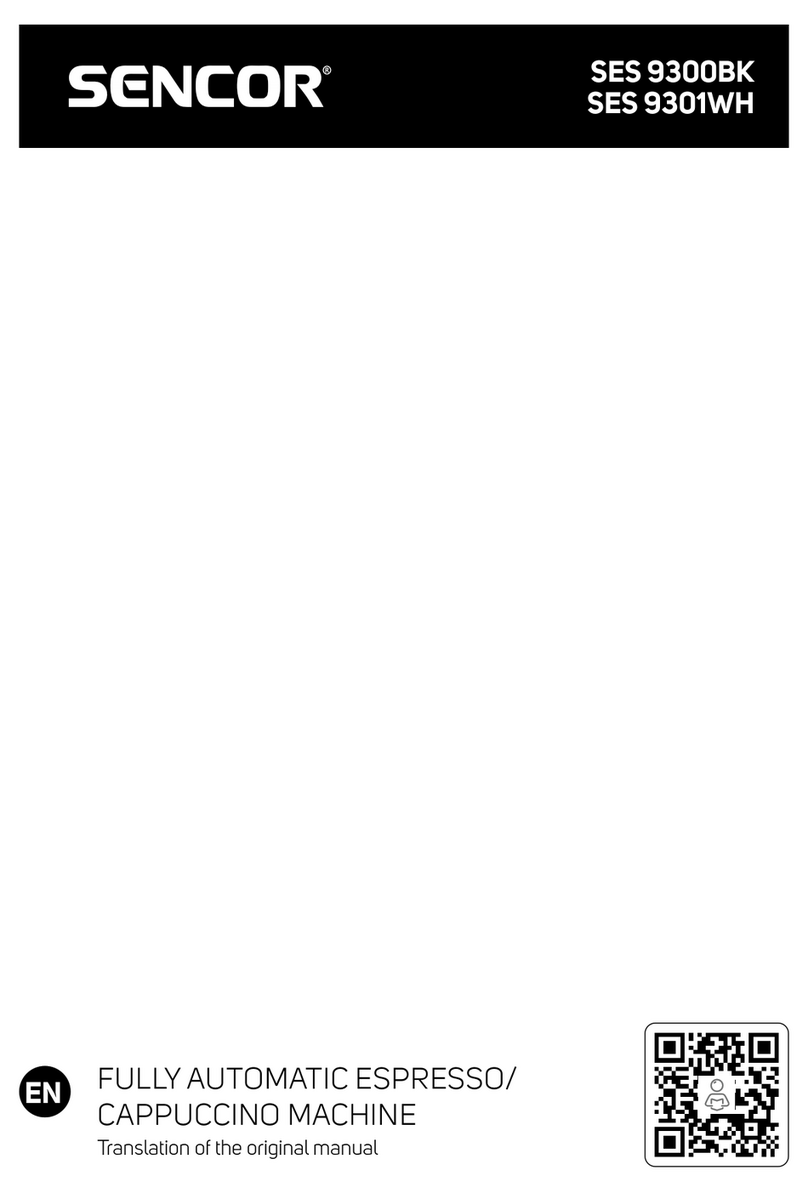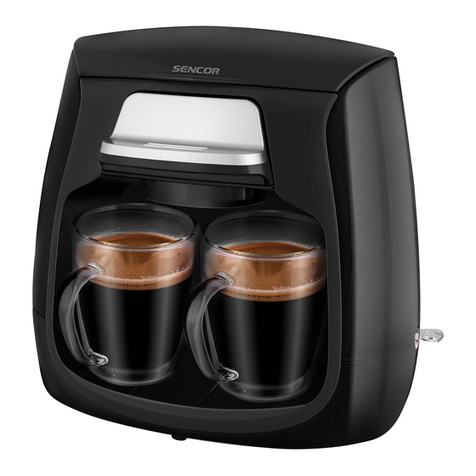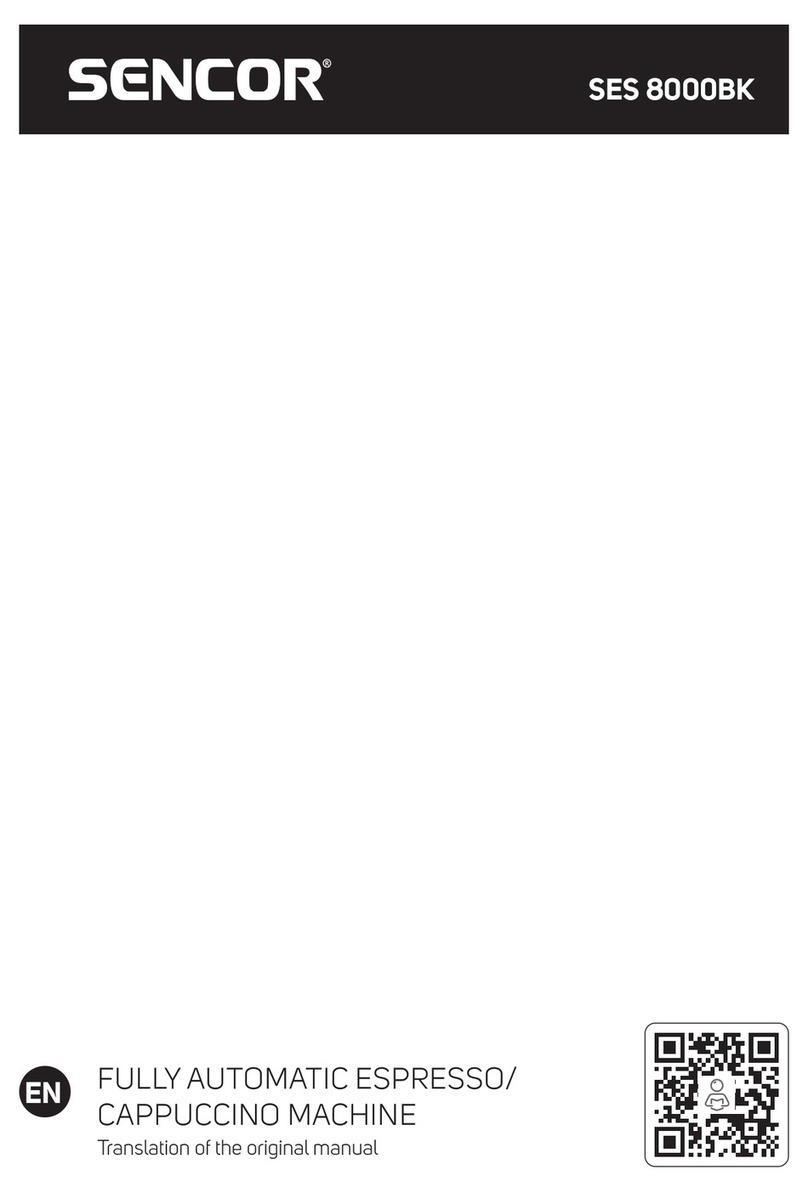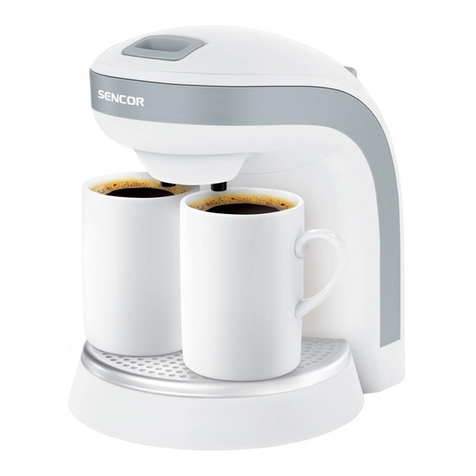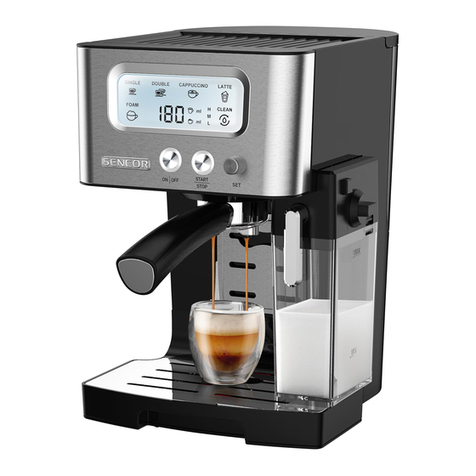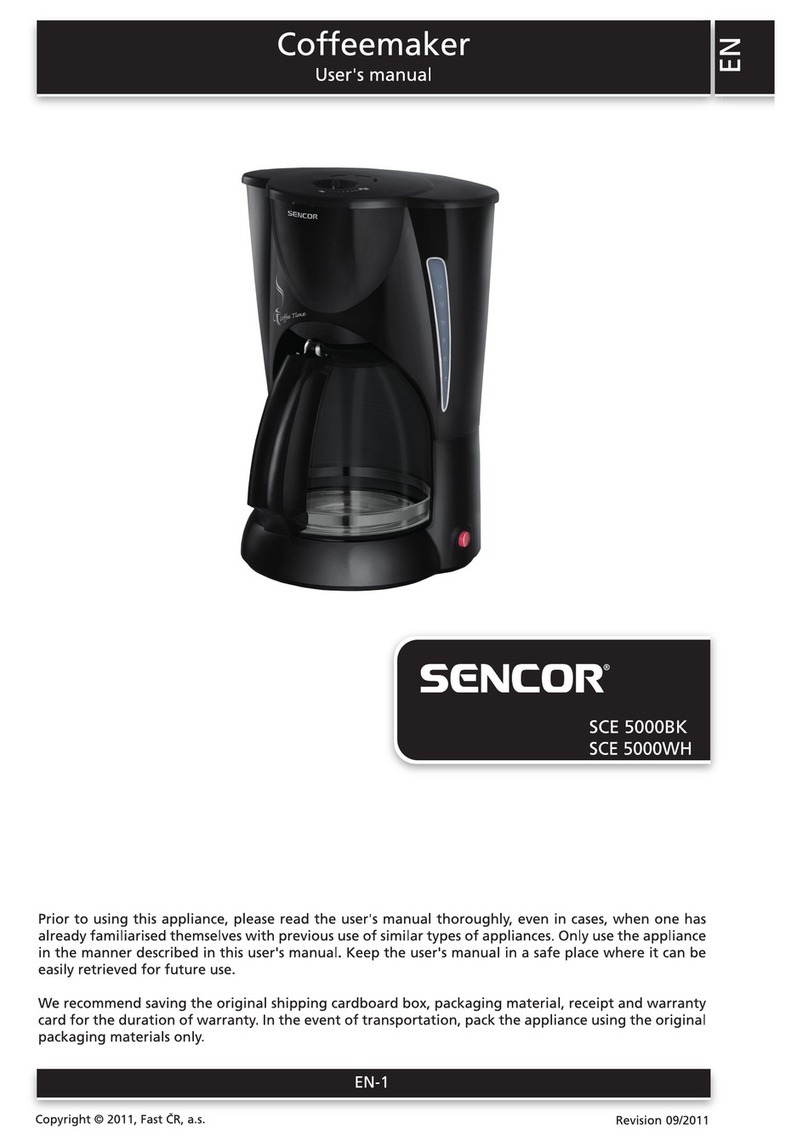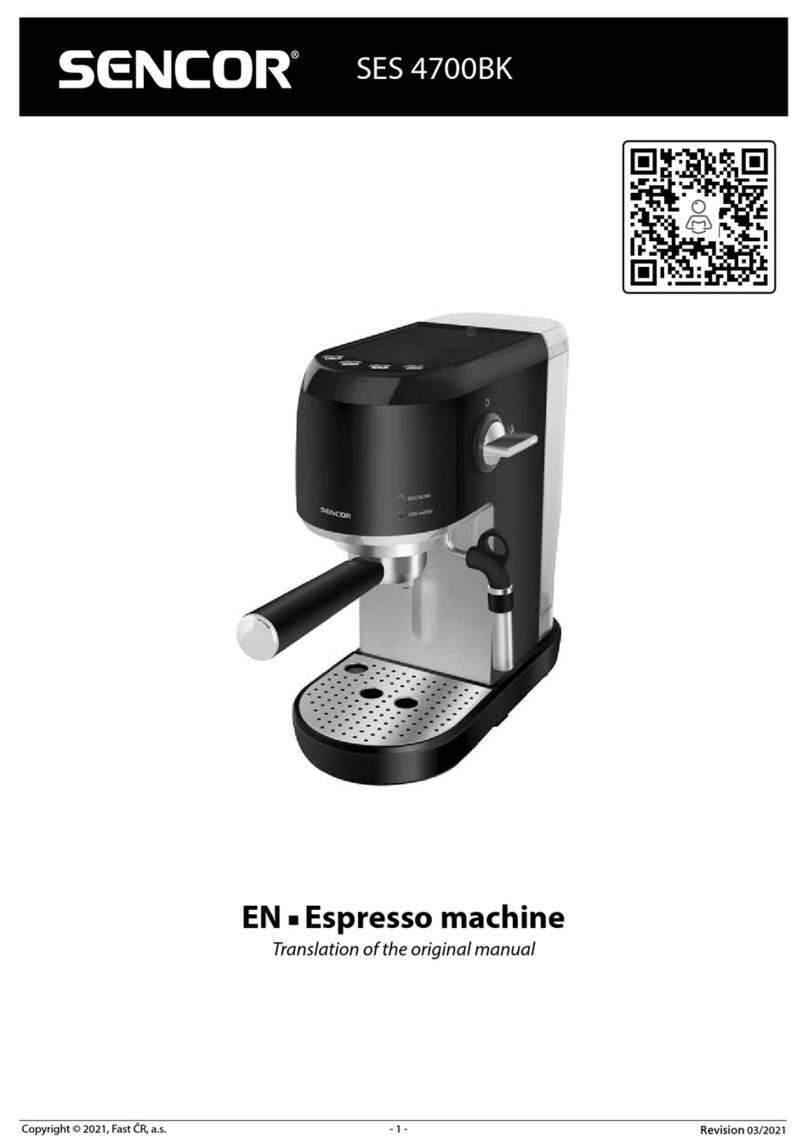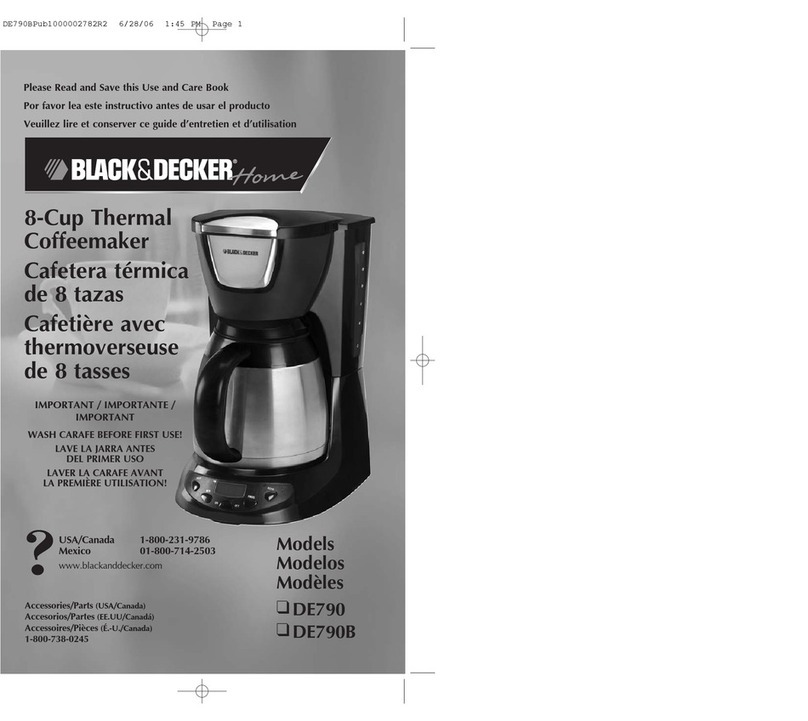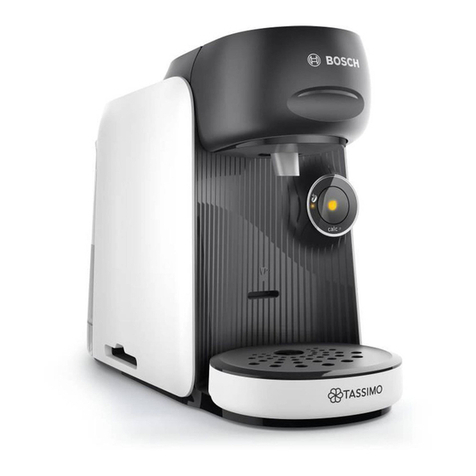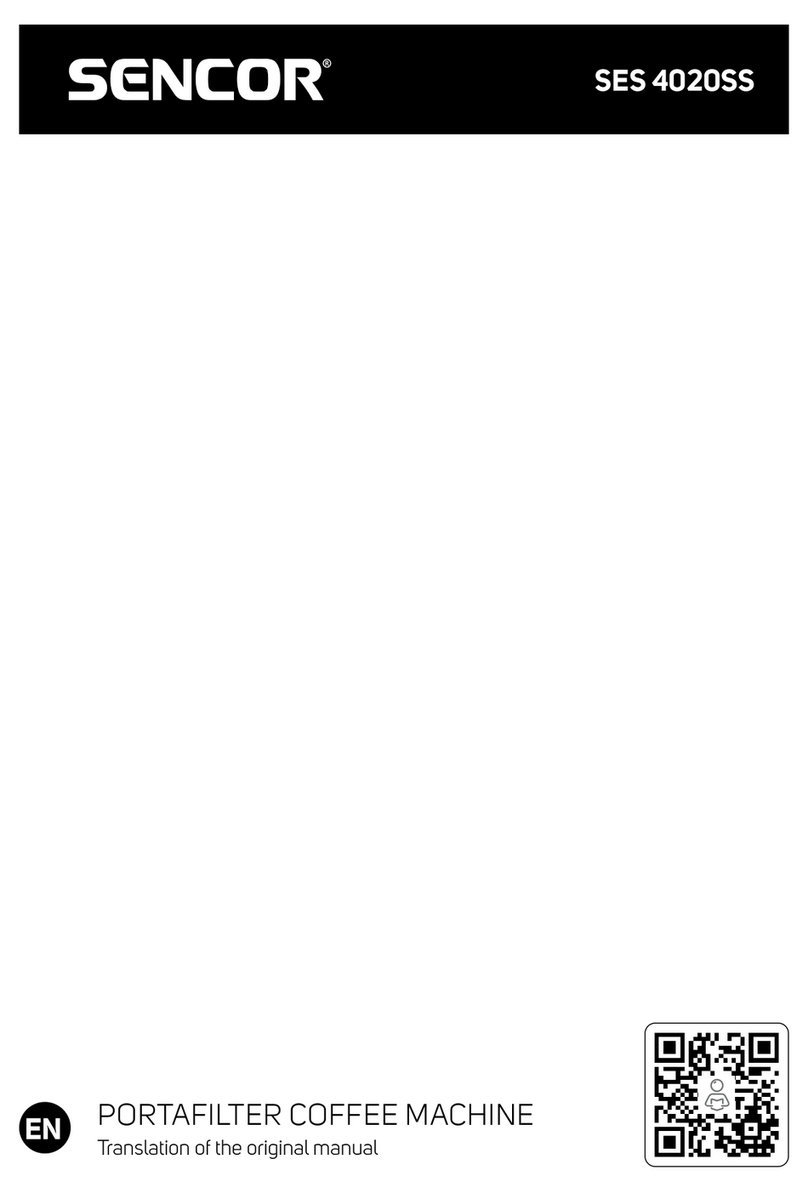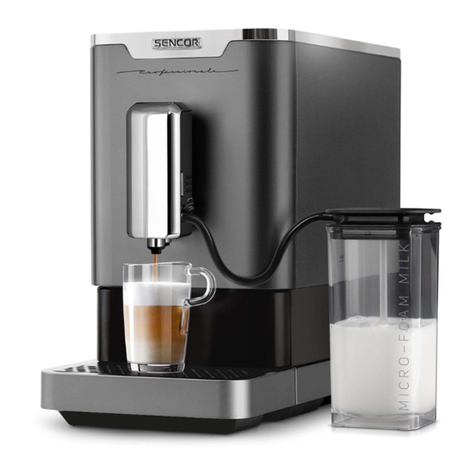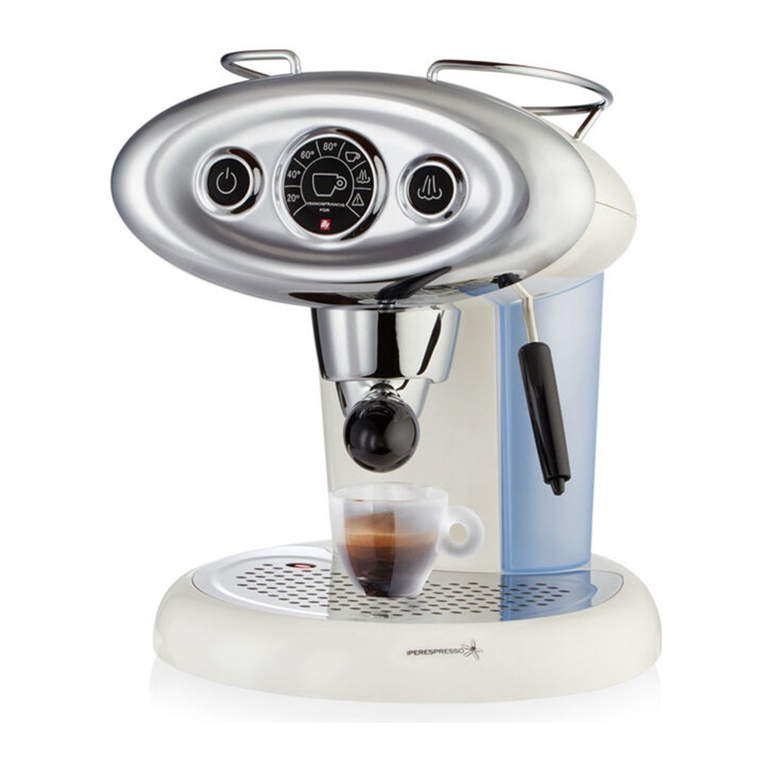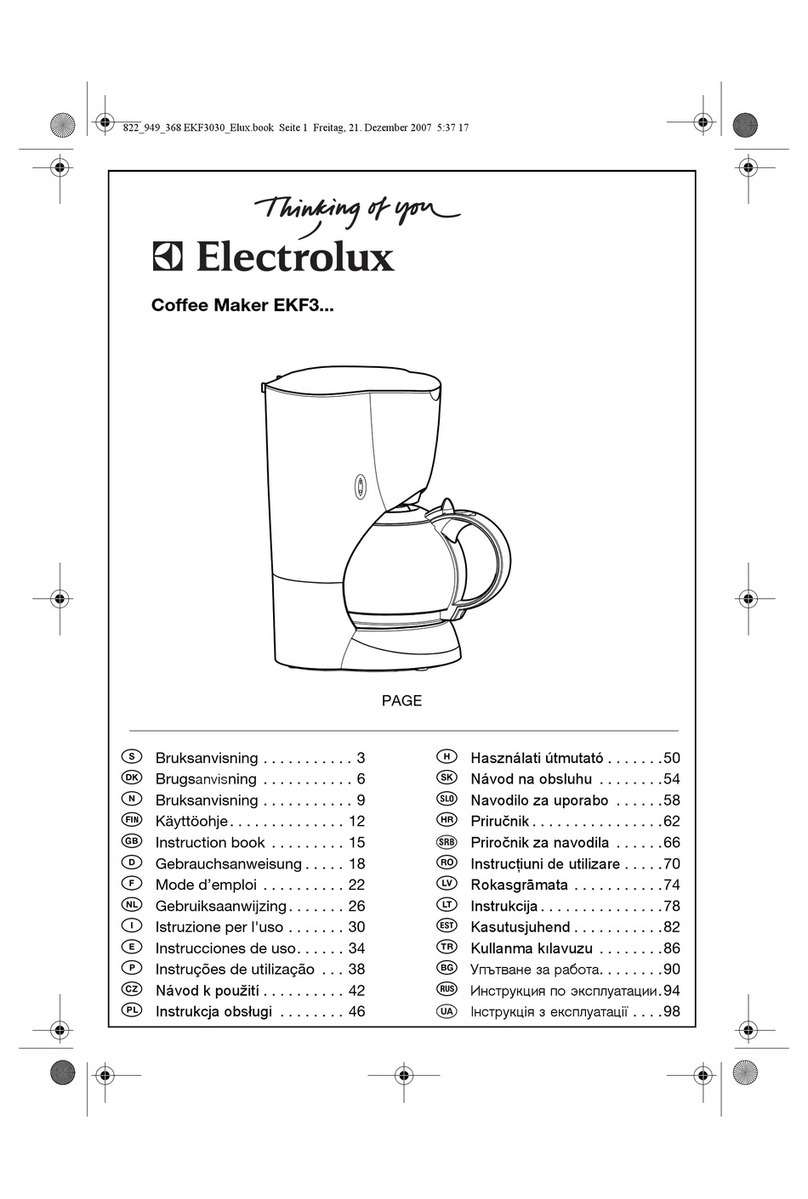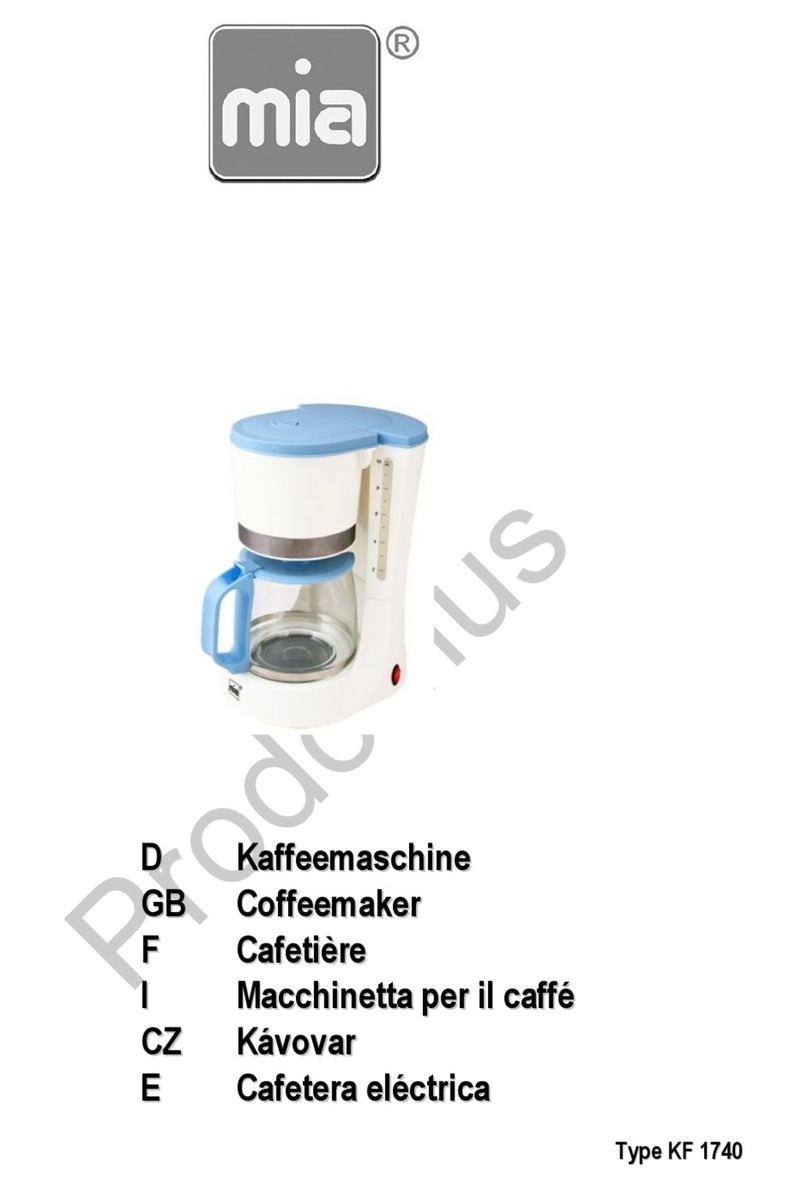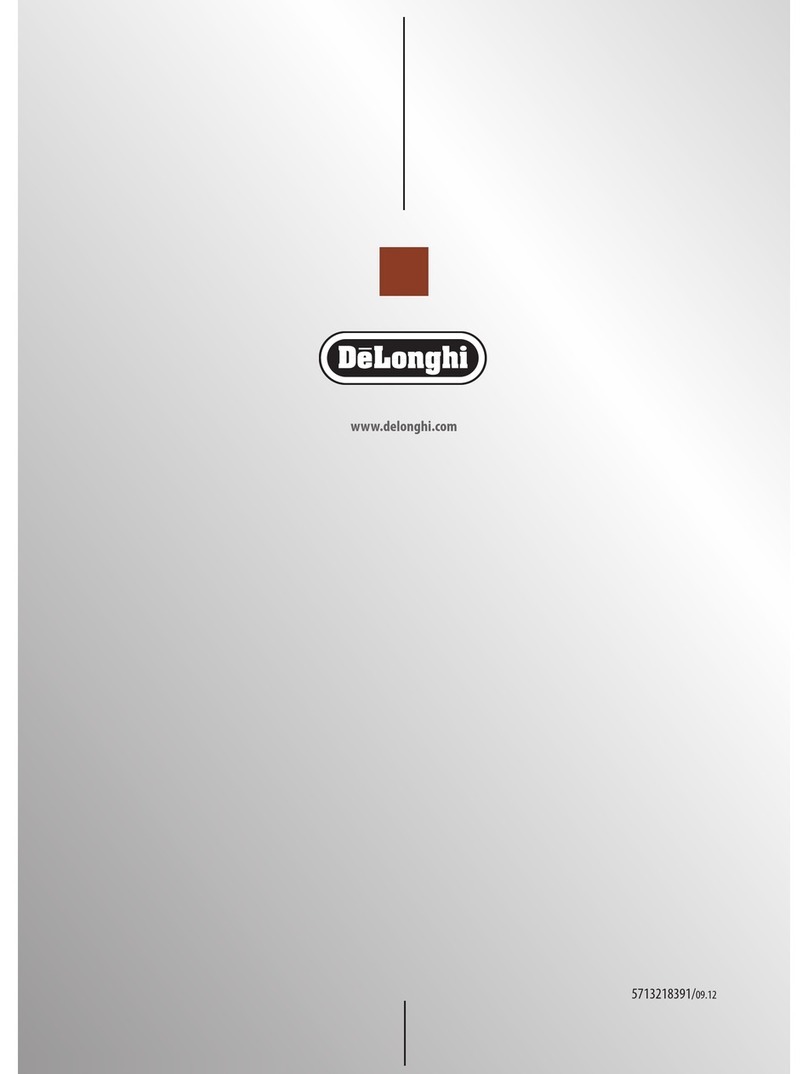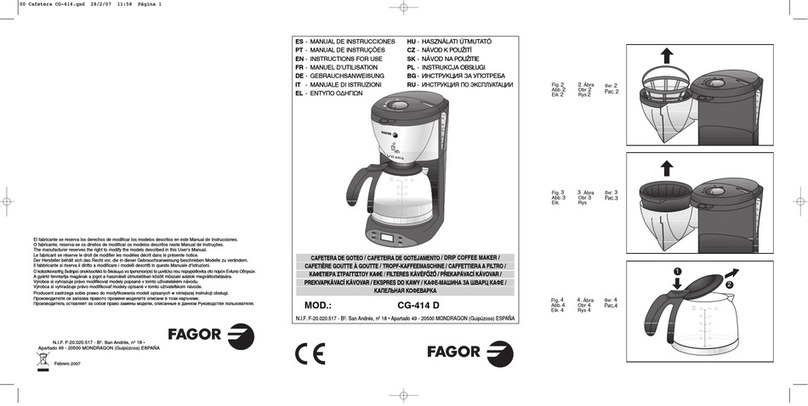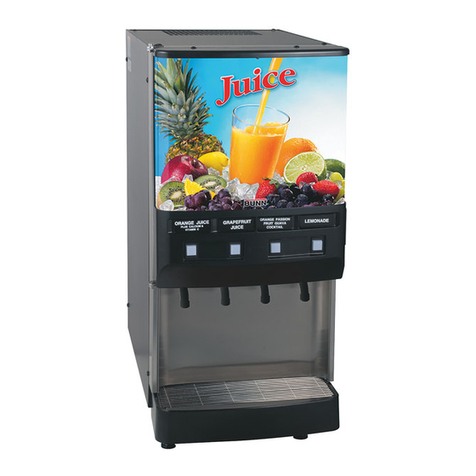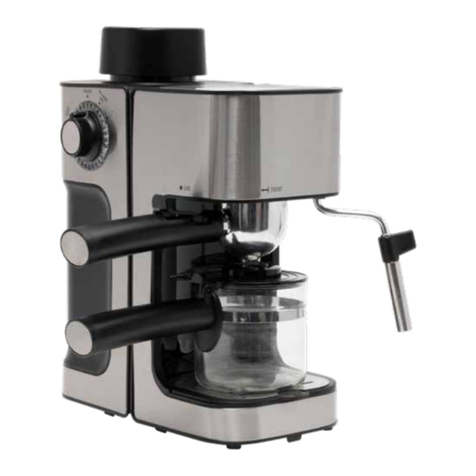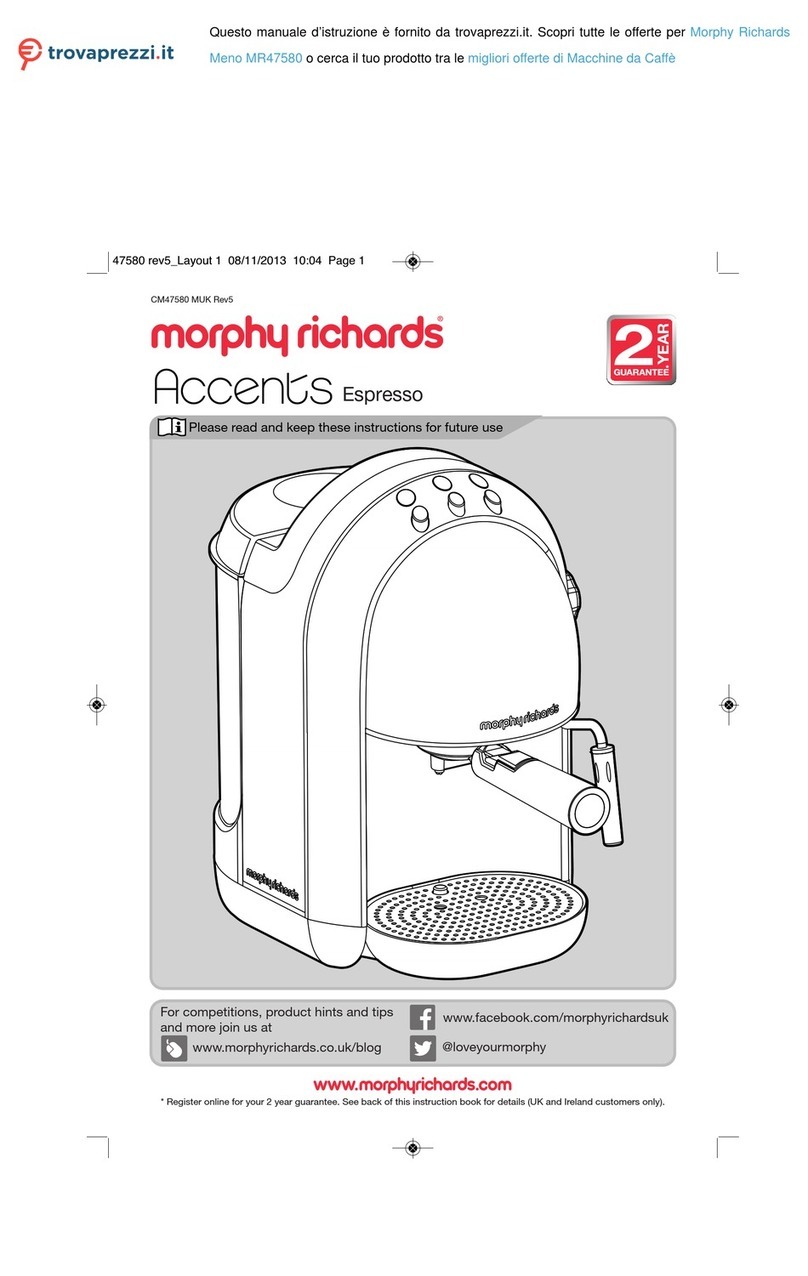
- 5 -Copyright © 2020, Fast ČR, a.s. 06/2020
EN Espresso Machine
User'smanual
■ Prior to using this appliance, please read the user’smanual thoroughly, even
in cases, when one has already familiarised themselves with previous use of
similar types of appliances. Only use the appliance in the manner described
in this user’smanual. Keep this user’smanual in asafe place where it can be
easily retrieved for future reference.
■
We recommend saving the original cardboard box, packaging material,
purchase receipt and responsibility statement of the vendor or warranty card
for at least the duration of the legal liability for unsatisfactory performance
or quality. In the event of transportation, we recommend that you pack the
appliance in the original box from the manufacturer.
DESCRIPTION OF THE APPLIANCE
A1 Cup warming plate
A2 Tilt-down lid with handle
A3 ON/OFF button
A4 Power indicator light
A5 Coffee brewing and steam
release mode toggle button
A6 Coffee brewing or steam release
water temperature indicator
A7 Brew head
A8 Portafilter with coffee spout
A9 1.5-litre removable water tank
A10 Removable grate
A11 Removable drip tray
A12 Selection knob, 3 options
– brewed coffee , stand-by
mode and steam release
A13 Boiler (not shown)
A14 Removable milk frothing sleeve
A15 Swivel steam nozzle
A16 Stainless steel filter for 1 cup
of coffee
A17 Stainless steel filter for 2 cups
of coffee
A18 Coffee measuring cup with
tamper
BEFORE FIRST USE OF THE APPLIANCE
1. Remove all packaging materials, protective film, promotional tags or labels
from the appliance.
2. Install the appliance on an even, dry and clean surface. Take the water tank
A9 out of the appliance and rinse it out with clean water with the addition
of a small amount of neutral dishwashing detergent. Then rinse it out
thoroughly using clean water, dry it and put it back in its place.
3. Take out the removable drip tray A11 with grate A10, wipe with adampened
textile, wipe dry and insert it back into the bottom part of the appliance.
4. Wash the portafilter A8, coffee measuring cup A18 and the stainless steel
filters A16 and A17 under clean running water with an addition of kitchen
detergent. Then rinse with clean water and wipe dry.
5. Wipe the outer surface of the appliance with alightly dampened cloth and
then wipe it thoroughly dry.
6. Prior to brewing the first cup of coffee, run the appliance empty for
approximately 60 seconds, i.e. with the water tank A9 filled with water but
without coffee tamped in the filter. This will clean out the inner components
and the brew head A7. A sufficiently large container must be placed
underneath the portafilter A8 for the hot water to flow into. Instructions for
starting the appliance are provided in chapter Operating the appliance.
OPERATING THE APPLIANCE
1. FILLING THE WATER TANK
1.1 Grasp the water tank A9 by the handle A2. Lift it up and remove it from the
rear part of the appliance.
1.2 Fill it up with cold water up to the maximum water mark, insert it back into
the appliance and tilt down the lid with handle A2. The water tank A9 must
be securely seated in place in order for water to be pumped out of it into the
boiler A13.
Note:
The water that you pour into the water tank A9 should ideally
be at room temperature (approximately 25 °C). Water that is too
cold, could negatively affect the final taste of the coffee beverage.
Attention:
The water tank A9 has amaximum capacity of 1.5 litres of
water. Do not overfill it.
Never fill the water tank A9 with warm water, hot water or
sparkling water, or liquids such as, for example, milk.
Do not fill the water tank A9 when it is inserted in the
appliance. There is adanger of splashing the appliance or
overfilling the water tank A9.
1.3 Do not leave any remaining water in the water tank A9 for longer than
one day. For brewing quality fresh coffee, it is necessary to use fresh water.
Otherwise, the resulting flavour of the coffee beverage may be negatively
affected.
2. TURNING ON THE APPLIANCE
2.1 Connect the power cord plug to apower socket. Make sure that the water
tank A9 is filled with fresh water, that the drip tray A11 and grate A10 are
installed in their place and that the knob A12 is set to the stand-by mode
position.
2.2 To turn on the appliance, press button A3. The power indicator A4 will be lit.
3. PRE-HEATING THE APPLIANCE AND CUPS
3.1 Preparing aquality cup of espresso requires that the appliance, portafilter
A7, filter A16 or A17, and cups are preheated. This is done in the following
way.
3.2 Place empty coffee cups upside down on to surface A1 and allow them to
warm up.
3.3 Make sure the button A5 is in the pressed out position intended for coffee
brewing. Select filter A16 or A17 and insert it into the portafilter A8 so
that it securely slides in along the entire perimeter. Insert the portafilter
A8 underneath the brew head A7 so that the handle is pointing to the left.
This position is marked with“INSERT”on the front panel of the appliance.To
fasten the portafilter A8 to the brew head A7, turn the handle to the right to
the“LOCK”position.
3.4 Wait until the indicator A6 lights up. Now the pre-heating process is finished.
4. BREWING COFFEE
4.1 Remove the portafilter A8 from the appliance and place it on an even
surface and pour the corresponding amount of ground coffee into the filter.
The one-cup coffee filter A16 is filled with asingle level measuring cup A18
of coffee. The two-cup coffee filter A17 is filled with double the amount of
coffee. One level measuring cup A18 is equivalent to 7 g of ground coffee.
Spread the coffee out evenly inside the filter and gently tamp it down with
the flat end of the measuring cup A18.
4.2 Thoroughly clean ground coffee remains from the edges of the filter A16
or A17. Insert the portafilter A8 underneath the brew head A7 so that the
handle is pointing to the left. This position is marked with “INSERT” on the
front panel of the appliance. To fasten the portafilter A8 to the brew head
A7, turn the handle to the right to the“LOCK” position.
4.3 Place one or two preheated cups underneath the portafilter A8. Make sure
that the cups are located underneath the spout.
4.4 Set the knob A12 to the coffee brewing position. Within afew moments,
coffee will start flowing into the cups.
Note:
The indicator A6 may turn off while the coffee is being extracted.
This signals adecline in the water temperature in the boiler A13.
The indicator A6 will light up again as soon as the boiler A13
heats the water up to the ideal coffee brewing temperature.
Once the required amount of coffee is in the cup, set the knob A12 to the
stand-by mode position. This completes the coffee extraction process. The
extraction time for acup of espresso should be between 20 and 30 seconds
and the volume should be approximately 20 to 30 ml.
Note:
Make sure that button A5 is in the brew coffee position. If button
A5 is set to the steam release position, the espresso machine will
not dispense coffee.
4.5 If you do not fill the filter with ground coffee, you may simply pour just hot
water, for example for tea, hot chocolate, etc.
4.6 Before you start brewing another cup of coffee, first remove used coffee
grounds, clean out the filter according to the instructions contained in
chapter Maintenance and cleaning and pour out the water from the drip
tray A11. When returning the drip tray A11 to its place, push it all the way
against the back wall of the appliance.
Attention:
The water contained in the drip tray A11 is hot. When
handling it, pay extra attention.
During operation, regularly check the water level in the
water tank A9 and make sure that it does not fall below
the minimum water level mark.
5. USING THE NOZZLE TO FROTH MILK AND HEAT WATER
5.1 Prepare some cooled semi-skimmed or full-fat milk and the container in
which you will froth the milk. During the milk frothing process, its volume
expands, therefore fill the container to no more than ⅓of its capacity.
5.2 Set the nozzle A15 to such a position that the milk frothing process is
comfortable.
5.3 Make sure that the knob A12 is set to the stand-by mode position. Press
button A5 and wait until indicator A6 lights up. This signalises that the water
in the boiler A13 has reached the optimal steam generation temperature.
This temperature is higher than for brewing coffee.
